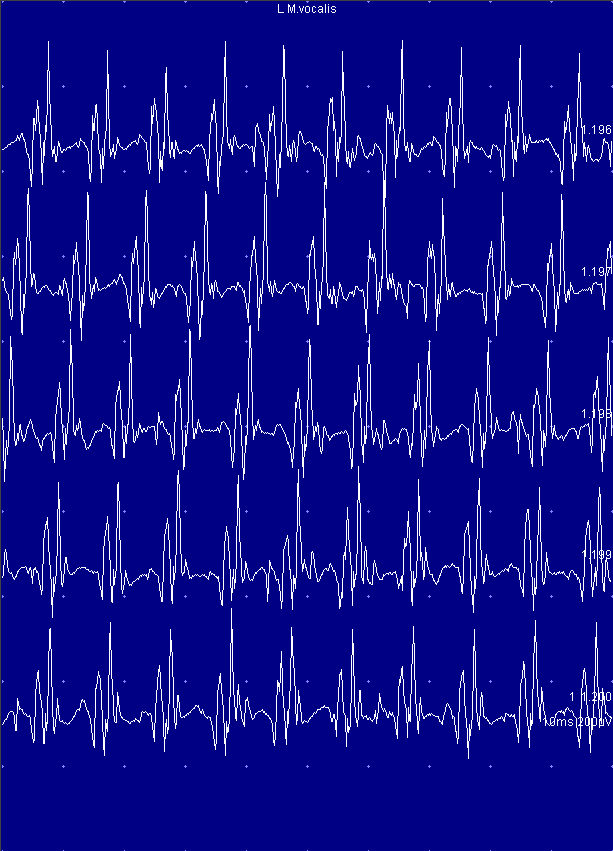In a resting muscle and a non-moving electrode, the examiner should check for pathological spontaneous activity. Under normal conditions, no spontaneous electrical activity should be present during rest.
However, a severely denervated muscle can show such activity in the form of unstable electrical charges. Pathological spontaneous activity implies that the muscle is degenerating or that the nerve has been injured and that the injury is ongoing.
Pathological Spontaneous Activity can conclude
- fibrillation potentials (Fibrillation potentials, fibs, as a form of pathological spontaneous activity.The fibrillation potentials have an amplitude of around 100µV.)
- increased insertional fibrillations (insertional activity),
- myotonic discharges,
- complex repetitive discharges (Complex repetitive discharges as a form of pathologic spontaneous activity),
- fasciculations and
- positive sharp waves (Positive sharp wave (PSW) have characteristic initially downward (positive) sharp slopes and then a more-gradually sloping recovery phase of repolarisation).
Specifically, fibrillation potentials are defined as low-amplitude, short-duration units generated by a single-muscle fiber indicating axonal degeneration. However, this symptom may occur only 10–14 days after the injury, since it takes some time for the nerve to degenerate to such a degree that the release of the neurotransmitter acetylcholine into the neuromuscular junction is completely fatigued and no more depolarization of the muscle will occur any longer. This degree of denervation occurs only in severe nerve injury. Spontaneous activity indicates a poor prognosis for recovery. Once regeneration begins, the muscle receives electrical impulses from the regenerated nerve and the spontaneous activity ceases. Spontaneous activity should be recorded and classified as:
- No reproducible pathologic spontaneous activity
(detectable in max. one location) - Little pathologic spontaneous activity
(detectable in multiple locations) - Moderate pathologic spontaneous activity
(detectable in many locations or long lasting in one location) - Dense pathologic spontaneous activity
(detectable in many locations and long lasting, screen filling)



